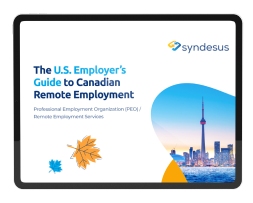On April 20, 2020, President Trump sent out a tweet that sent the US, and indeed many around the world, into a frenzy. Tweeting that in order “to protect the jobs of our GREAT American Citizens,” Trump would be “signing an Executive Order to temporarily suspend immigration into the United States!”
This sweeping language resulted in days of speculation, nervous chatter, and never-ending reporting on what this tweet meant, what the executive order (EO) could possibly entail, and what its effects would be. In other words, it set off a wildfire of speculation.
Well two days later, on April 22, 2020, the EO was drafted and signed.
President Trump’s recent executive order limiting immigration
Despite all the angst and speculation, Trump’s EO was not nearly as sweeping as his original tweet had suggested. According to Reuters, it “ordered a temporary block on some foreigners from permanent residence in the United States” and was set to last only 60 days, though there would be an opportunity to review and possibly extend it after those 60 days were over.
Additionally, while the “measure would block immigration based on both employment and family ties,” it would not affect “guest workers who enter the United States on temporary visas, such as farmworkers and skilled workers in the H-1B visa program”.
It came with carve-outs for doctors, nurses, and other healthcare and otherwise “essential” workers needed to fight against the coronavirus pandemic.
So yes, what first seemed to be a sweeping restriction on immigration turned out to be much less impactful in the short term.
But there is the possibility that this EO will be extended and permanent residence will continue to be restricted. And perhaps more importantly, the EO left an opening for further restrictions.
So what does this all mean for employers and their foreign national workforce, especially when the US economy starts to open back up?
Limited immigration means limited access to talent
It’s no secret that President Trump’s administration has targeted the US immigration system time and again, but as the administration starts to look toward reopening the economy, tech companies may find themselves scrambling to find talent.
Because you see, as US immigration continues to get hit, and as the US continues to be the epicenter of the global COVID-19 epidemic, foreign talent that wants to come here are having a harder time doing so, particularly on the famous H-1B visa.
On the flip side, other foreign workers may simply not want to come to the US at all given the country’s high rate of coronavirus infections.
And guess what, this includes Canadians too.
Yes, Canadians have access to the TN visa, a work visa allowing Canadian (and Mexican) nationals to work in the US But unlike the H-1B visa, which has a direct path to citizenship, the TN visa does not. So the allure of moving to the US and staying here permanently isn’t possible (or isn’t straightforward) on a TN visa.
This leaves us with a situation where US employers, whose demand for tech talent outpaces supply, will be left with few options and lots of job openings.
So what can be done about this? One way is to consider hiring workers in Canada to work remotely for US companies!
So hire Canadian workers – but why and how?
First, let’s start with the Why. Here are just four of the top reasons to look to Canada for tech talent:
1. Canada is geographically close to the US
In-person meetings, when necessary, are easy to facilitate. Yes, it’s an international hire, but New York-Toronto is closer than New York-San Francisco!
2. Canada has highly skilled technology professionals
From top AI experts in Montreal to top talent in Vancouver, Calgary and Toronto, Canada has a large talent pool of qualified tech workers.
3. Canada is a lower-cost market
With health insurance covered by the federal government and lower (yet still competitive) salaries than cities like New York, LA, Boston and San Francisco, Canada could be a cost-savings win for your company.
4. Language and culture are very similar
Which makes it easier to find a good cultural fit and decreases language barrier friction.
The list goes on, but instead of giving more reasons why to hire remote tech talent, here’s how.
Simply hire remote tech talent – with a PEO
A PEO, or a professional employer organization, enables US-based companies to remotely hire a Canadian professional in Canada as if they had an office and an official legal presence in Canada, but without actually having one.
Instead, the PEO hires the Canadian worker, has the worker on their payroll, etc. But the US company is the one actually paying the salary, providing stock options and so forth.
How does the PEO make money?
By charging the US employer a fee for facilitating and maintaining the Canadian hire. But here’s the thing – with the cost savings of hiring a tech professional in Canada versus the US, particularly the hot US tech markets noted above, even with the PEO fee the US employer saves money on the employee. And we’re not even talking about US immigration fees.
Would you hire a tech worker remotely in Canada?
Syndesus can help you talk through the logistics of hiring a remote worker in Canada.
The reality is that it’s easier, cheaper, and faster than bringing a foreign national into the US on an H-1B or even a TN visa, especially with all the mounting uncertainty around US immigration.
Interested in learning more? Book a consultation to chat about your situation and see if Syndesus can help you continue to expand your team with the world’s most talented technology professionals, but without the world’s most frustrating immigration system!






